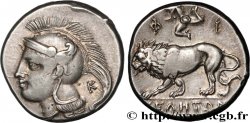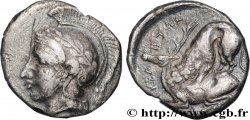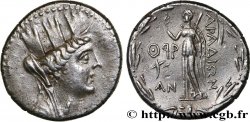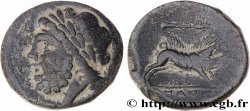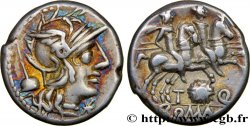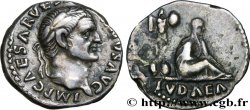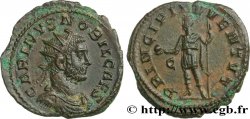Live auction - bgr_440943 - LUCANIA - VELIA Nomos, statère ou didrachme
Чтобы принять участие в торгах, вы должны войти в систему и стать подтвержденным участником аукциона. Войдите, чтобы сделать ставку. Ваш аккаунт будет подтвержден в течение 48 часов. Не ждите до закрытия торгов, чтобы зарегистрироваться.Сделав ставку на данный товар, вы вступаете в юридическое соглашение на покупку выбранного товара и нажатием кнопки «Сделать ставку» подтверждаете принятие вами условий интернет-аукционов cgb.fr.
Ставка может бить сделана только в полном эквиваленте евро. Торги закроются согласно времени, указанному в описании товара, все ставки, сделанные после закрытия торгов, учитываться не будут. Не следует откладывать предложение вашей ставки до последнего момента, так как система может не успеть обработать вашу заявку, и ваша ставка не будет принята. Более детальную информацию вы найдёте здесь: FAQ по интернет-аукционам.
Все ставки победителей подлежат комиссии 18%.
Все ставки победителей подлежат комиссии 18%.
| Оценить : | 550 € |
| Цена : | Нет ставки |
| Максимальная предлагаемая цена : | Нет ставки |
| Конец торгов : | 01 August 2017 14:01:00 |
Тип Nomos, statère ou didrachme
Дата: c. 340-334 AC.
Монетный двор / Город: Vélia
Металл: silver
Диаметр: 22 mm
Ориентация осей монеты: 6 h.
Вес: 7,31 g.
Редкость: R1
Комментарии о состоянии
Exemplaire sur un flan ovale et irrégulier bien centré des deux côtés avec le grènetis visible au revers. Usure importante, mais parfaitement lisible et identifiable. Belle tête d’Athéna. Lion élégant. Patine de collection avec des reflets dorés
Ссылки в каталоге: :
Происхождение:
Cet exemplaire a été acquis en juin 1994 et provient de Conseils Placements
Лицевая сторона
Аверс: описание: Tête d'Athéna à gauche, coiffée du casque attique à cimier avec triple aigrette, orné d’un griffon.
Аверс: легенда: Q
Обратная сторона
Реверс: Описание: Lion passant à droite ; caducée tourné à droite, au-dessus.
Реверс: легенда: UELHTWN/ C
Реверс: перевод: (de Vélia).
Комментарий
Très tôt, le monnayage de Vélia a été décrit comme ayant inspiré la drachme lourde de Marseille (LT. 785-791). Certains l’ont même décrit comme un monnayage symmachique : un lion de Vélia étant l’équivalent de deux lions de Marseille. Aujourd’hui, cette théorie est remise en cause, par G. Depeyrot, non sans arguments, mais avec une certaine acrimonie. Le lion de Vélia a pu servir de modèle à celui de Marseille, mais à quelle date ? La frappe à Vélia commence dans la seconde moitié du Ve siècle avant J.-C. pour se poursuivre jusqu’en 281 avant J.-C. À quel moment les Massaliotes auraient-ils emprunté le lion de Vélia ?.
Very early on, the coinage of Velia was described as having inspired the heavy drachma of Marseille (LT. 785-791). Some have even described it as a symmachic coinage: one lion of Velia being the equivalent of two lions of Marseille. Today, this theory is challenged, by G. Depeyrot, not without arguments, but with a certain acrimony. The lion of Velia could have served as a model for that of Marseille, but at what date? Minting at Velia began in the second half of the 5th century BC and continued until 281 BC. At what point might the Massaliotes have borrowed the lion of Velia?
Very early on, the coinage of Velia was described as having inspired the heavy drachma of Marseille (LT. 785-791). Some have even described it as a symmachic coinage: one lion of Velia being the equivalent of two lions of Marseille. Today, this theory is challenged, by G. Depeyrot, not without arguments, but with a certain acrimony. The lion of Velia could have served as a model for that of Marseille, but at what date? Minting at Velia began in the second half of the 5th century BC and continued until 281 BC. At what point might the Massaliotes have borrowed the lion of Velia?








 Cообщить об ошибке
Cообщить об ошибке Распечатать страницу
Распечатать страницу Отправить мой выбор
Отправить мой выбор Задать вопрос
Задать вопрос Consign / sell
Consign / sell
 Информация
Информация